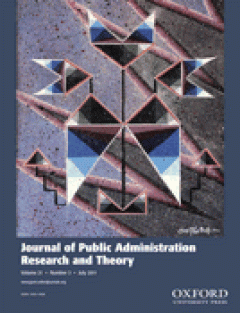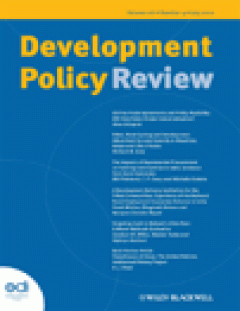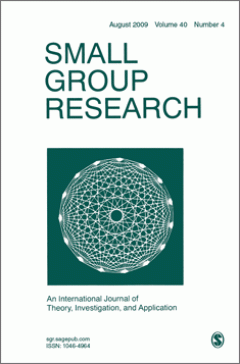Filter by

Education, equality and human rights : Exploring the impact of devolution in …
Foremost amongst social policy interventions, state education has a singular and foundational role in the promotion of equality and human rights. This paper explores the way that such matters are addressed in the policy and law making programmes of the UK’s devolved administrations. It is argued that this is an appropriate locus of enquiry for the constitutional law establishing the devolved le…
- Edition
- Vol. 31 no. 3, August 2011.pp. 431-453
- ISBN/ISSN
- 02610183
- Collation
- -
- Series Title
- Critical Social Policy
- Call Number
- -

Moving children? Child trafficking, child migration, and child rights
This article aims to contribute to the growing body of scholarly work that critically deconstructs dominant discourse on ‘trafficking’ and to the literature that documents and theorizes the gap between states’ spoken commitment to children’s rights and the lived experience of migrant children in the contemporary world. It contrasts the intense public and policy concern with the suffering of ‘tr…
- Edition
- Vol. 31 no. 3, August 2011.pp. 454-477
- ISBN/ISSN
- 02610183
- Collation
- -
- Series Title
- Critical Social Policy
- Call Number
- -

Performance Measures and Democracy : Information Effects on Citizens in Field…
There has been a massive expansion in published information about the performance of bodies delivering public services but little research about the effects on citizens. Research on information and political participation suggests that information cues allow citizens to economize on the need for full information, influencing their perceptions and attitudes and helping them hold democratic gover…
- Edition
- Vol. 21, number 3, July 2011,pp. 399-418
- ISBN/ISSN
- 10531858
- Collation
- -
- Series Title
- Journal of Public Administration and Research Theory
- Call Number
- -

Belief Systems and Social Capital as Drivers of Policy Network Structure : Th…
This article uses exponential random graph models to investigate the roles of policy-relevant beliefs and social capital as drivers of network structure. The advocacy coalition framework argues that actors with similar policy beliefs are more likely to form coalitions, leading to policy subsystems fragmented into ideological groups. Social capital is defined as trust and norms of reciprocity, w…
- Edition
- Vol. 21, Number 3, July 2011.pp. 419-444
- ISBN/ISSN
- 10531858
- Collation
- -
- Series Title
- Journal of Public Administration Research and Theory
- Call Number
- -

Receipt of Government Revenue among Nonprofit Human Service Organizations
In an era of privatization, government-nonprofit relations largely determine the face of social provision. Yet, little is known about the organizational factors that influence the receipt of government allocations by nonprofit human service organizations. This study examines how the institutional and ecological environments under which nonprofit human services operate along with the political a…
- Edition
- Vol. 21, number 3, July 2011,pp. 445-471
- ISBN/ISSN
- 10531858
- Collation
- -
- Series Title
- Journal of Public Administration Research and Theory
- Call Number
- -

Crowding Out Intrinsic Motivation in the Public Sector
Employing intrinsically motivated individuals has been proposed as a means of improving public sector performance. In this article, we investigate whether intrinsic motivation affects the sorting of employees between the private and the public sectors, paying particular attention to whether extrinsic rewards crowd out intrinsic motivation. Using British longitudinal data, we find that individua…
- Edition
- Vol. 21, Number 3, July 2011, pp. 473-493
- ISBN/ISSN
- 10531858
- Collation
- -
- Series Title
- Journal of Public Administration Research and Theory
- Call Number
- -

Institutional Motivations in the Adoption of Innovations : The Case of E-Gove…
This article examines the institutional motivations underlying innovation. Although attention to motivation played a role in early theorizing on innovation, the phenomenon is understudied empirically. A clearer understanding of the relative importance of differing institutional motivations can illuminate why public organizations adopting innovative strategies and programs often fail to replicat…
- Edition
- Vol. 21, Number 3, July 2011,pp. 495-519
- ISBN/ISSN
- 10531858
- Collation
- -
- Series Title
- Journal of Public Administration Research and Theory
- Call Number
- -

Testing a Revised Measure of Public Service Motivation : Reflective versus Fo…
Public service motivation (PSM) is perceived as a multidimensional construct, as an overall, unobserved latent variable with various latent dimensions. The present study focuses on the relationships between PSM and its dimensions. The purposes in this study are to confirm a set of revised items as indicators of a rational base of PSM, to compare a four-factor model with various three-factor mod…
- Edition
- Vol. 21, Number 3, July 2011.pp. 521-546
- ISBN/ISSN
- 10531858
- Collation
- -
- Series Title
- Journal of Public Administration Research and Theory
- Call Number
- -

Public Service in the Private Sector : Private Loan Originator Participation …
In the United States, housing policies focused on assisting low-income families toward homeownership have resulted in the creation of publicly subsidized affordable mortgage programs. Private lenders and their employees (loan originators) are often the key point of contact to connect low-income borrowers to public programs. But why would loan originators offer borrowers public loan programs, pa…
- Edition
- Vol. 21, Number 3, July 2011.pp. 547-572
- ISBN/ISSN
- 10531858
- Collation
- -
- Series Title
- Journal of Public Administration Research and Theory
- Call Number
- -

Comparing Public and Private Management : Theoretical Expectations
This article presents a theoretical assessment of how the impact of management might differ in public versus private organizations. It essentially seeks to reframe the debate from “are public organizations are different from private organizations?” to “is the impact of management action the same in both sectors?” We start with a series of assumptions based on a set of relevant variables and the…
- Edition
- Vol. 21, Supplement 3, July 2011.pp. i283-i299
- ISBN/ISSN
- 10531858
- Collation
- -
- Series Title
- J Public Adm Res Theory
- Call Number
- -

Dimensions of Publicness and Organizational Performance : A Review of the Evi…
Debates about the merits of publicness have dominated the public administration landscape since the foundation of the modern state. The extent of organizational publicness (ownership, funding, and control) has waxed and waned in developed countries: it rose following the postwar settlement and fell under the policies of New Right government and the popularity of the notions of New Public Manage…
- Edition
- Vol. 21, Supplement 3, July 2011.pp. i301-i319
- ISBN/ISSN
- 10531858
- Collation
- -
- Series Title
- Journal of Public Administration Research and Theory
- Call Number
- -

Sampling Designs for Analyzing Publicness : Alternatives and Their Strengths …
Research comparing public and private organizations and otherwise analyzing “publicness” involves complex challenges. These include the challenge of designing and attaining adequate samples to represent the two complex categories of “public” and “private,” as well as dimensions of publicness, and subcategories and control variables needed for valid comparisons. This review of sampling alternati…
- Edition
- Vol. 21, Supplement 3, July 2011,pp. i321-i345
- ISBN/ISSN
- 10531858
- Collation
- -
- Series Title
- Journal of Public Administration Research and Theory
- Call Number
- -

Parsing Public/Private Differences in Work Motivation and Performance : An Ex…
This article echoes recent calls for public management research to focus on core questions and utilize multiple methods to advance the state of knowledge in the field. In this article, we call for more experimental research on the public/private distinction, which is a core public management research topic. We then conduct a pilot experimental study that provides new insights—and what seem to b…
- Edition
- Vol. 21, Suppl. 3, July 2011,pp. i347-i362
- ISBN/ISSN
- 10531858
- Collation
- -
- Series Title
- Journal of Public Administration Research and Theory
- Call Number
- -

Integrative Publicness : A Framework for Public Management Strategy and Perfo…
“Empirical publicness” explains organizations on the basis of their mix of political and economic authority, whereas “normative publicness” seeks to identify, prescribe or infuse public values. The scholarly traditions developed by these two types of publicness have tended not to overlap and for very good reason—blending empirical and normative theory and purpose is a problem of longstanding, o…
- Edition
- Vol. 21, Suppl 3, July 2011,pp. i363-i380
- ISBN/ISSN
- 10531858
- Collation
- -
- Series Title
- Journal of Public Administration Research and Theory
- Call Number
- -

Promoting Children's Well-being : Policy Lessons from Past and Present Econom…
This article reviews evidence from historical crisis episodes from four geographical regions to identify patterns in how economic crises shape dimensions of child wellbeing. The analysis is motivated by a concern to identify possible policy lessons of relevance to the 2007- financial crisis and its impacts on children and their caregivers. We conclude that while broad counter-cyclical economic …
- Edition
- Volume 29, Issue 5, September 2011, pages 621–641
- ISBN/ISSN
- 09506764
- Collation
- -
- Series Title
- Development Policy Review Special Issue: Impacts of Economic Crises on Child Well-being
- Call Number
- -

Bridging the gap between planning evaluation and programme evaluation : The c…
Despite the potential advantages of a closer link between planning evaluation and programme evaluation , both fields have been developed independently. This is mainly due to significant differences between them, particularly in terms of historical background, evaluation scope and contexts, the articulation between theory and practice, and the timings of evaluation. This article advocates bridgi…
- Edition
- Vol. 17 no. 3, July 2011.pp. 293-307
- ISBN/ISSN
- 13563890
- Collation
- -
- Series Title
- Evaluation
- Call Number
- -

Methodological Issues in Measuring Group Learning
This article examines current empirical approaches to group learning. It focuses on two central questions: Are these approaches really measuring group learning, and what critical issues should be resolved in future group-learning research? The rationale for this examination is threefold. First, the last 10 years have seen a substantial increase in research on group learning. As this literature …
- Edition
- Vol. 42 no. 4, August 2011.pp. 379-404
- ISBN/ISSN
- 10464964
- Collation
- -
- Series Title
- Small Group Research
- Call Number
- -

Review of Virtual Environment Studies on Social and Group Phenomena
This article provides a review of previously published studies on virtual environments (VEs), focusing especially on empirical articles on social and group phenomena in VEs and their methodological and theoretical trends. VEs can be defined as communication systems in which interactants share the same three-dimensional digital space and can navigate, manipulate objects, and interact with one an…
- Edition
- Vol. 42 no. 4, August 2011.pp. 405-457
- ISBN/ISSN
- 10464964
- Collation
- -
- Series Title
- Small Group Research
- Call Number
- -

Does Backing Up Behavior Explain the Efficacy—Performance Relationship in T…
Although the relationship between collective efficacy beliefs and team performance has been well-documented, few studies have explored the causal mechanisms that might explain these effects. In the current study, the authors explore the role of backing up behavior, a specific form of teamwork behavior, in explaining why high efficacy beliefs lead to high levels of team performance. Participants…
- Edition
- Vol. 42 no. 4, August 2011.pp. 458-474
- ISBN/ISSN
- 10464964
- Collation
- -
- Series Title
- Small Group Research
- Call Number
- -

Effects of Anonymity and Social Comparison of Rewards on Computer-Mediated Gr…
Anonymity in computer-mediated communication (CMC) is valued in organizations because it can facilitate participation in discussions, especially of sensitive issues. Concerns over maintaining the motivation to participate in such discussions, because of the inability to reward people for their contributions, have led to the development of techniques that allow rewards to be allocated without id…
- Edition
- Vol. 42 no. 4, August 2011,pp. 475-503
- ISBN/ISSN
- 10464964
- Collation
- -
- Series Title
- Small Group Research
- Call Number
- -
 Computer Science, Information & General Works
Computer Science, Information & General Works  Philosophy & Psychology
Philosophy & Psychology  Religion
Religion  Social Sciences
Social Sciences  Language
Language  Pure Science
Pure Science  Applied Sciences
Applied Sciences  Art & Recreation
Art & Recreation  Literature
Literature  History & Geography
History & Geography